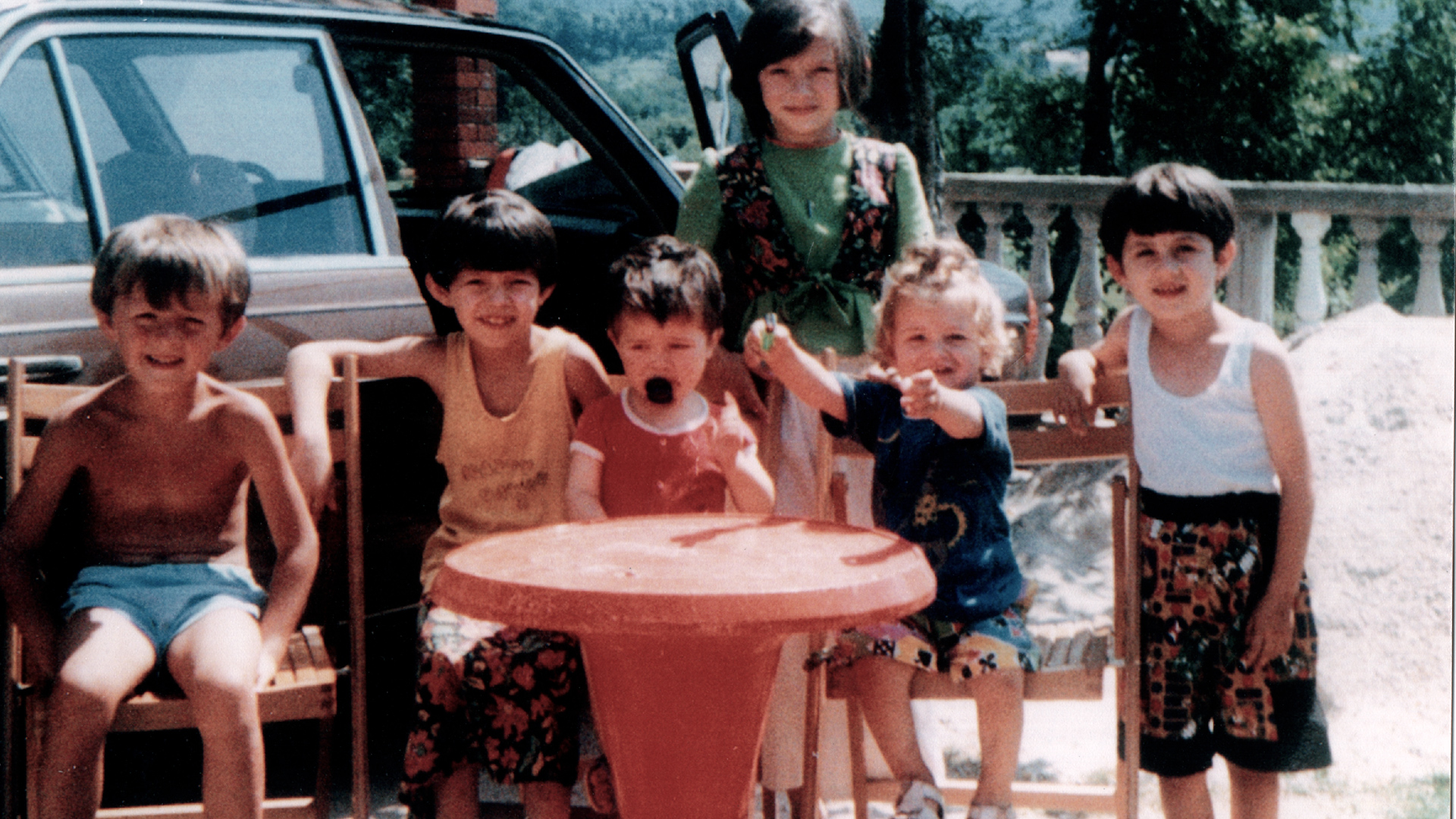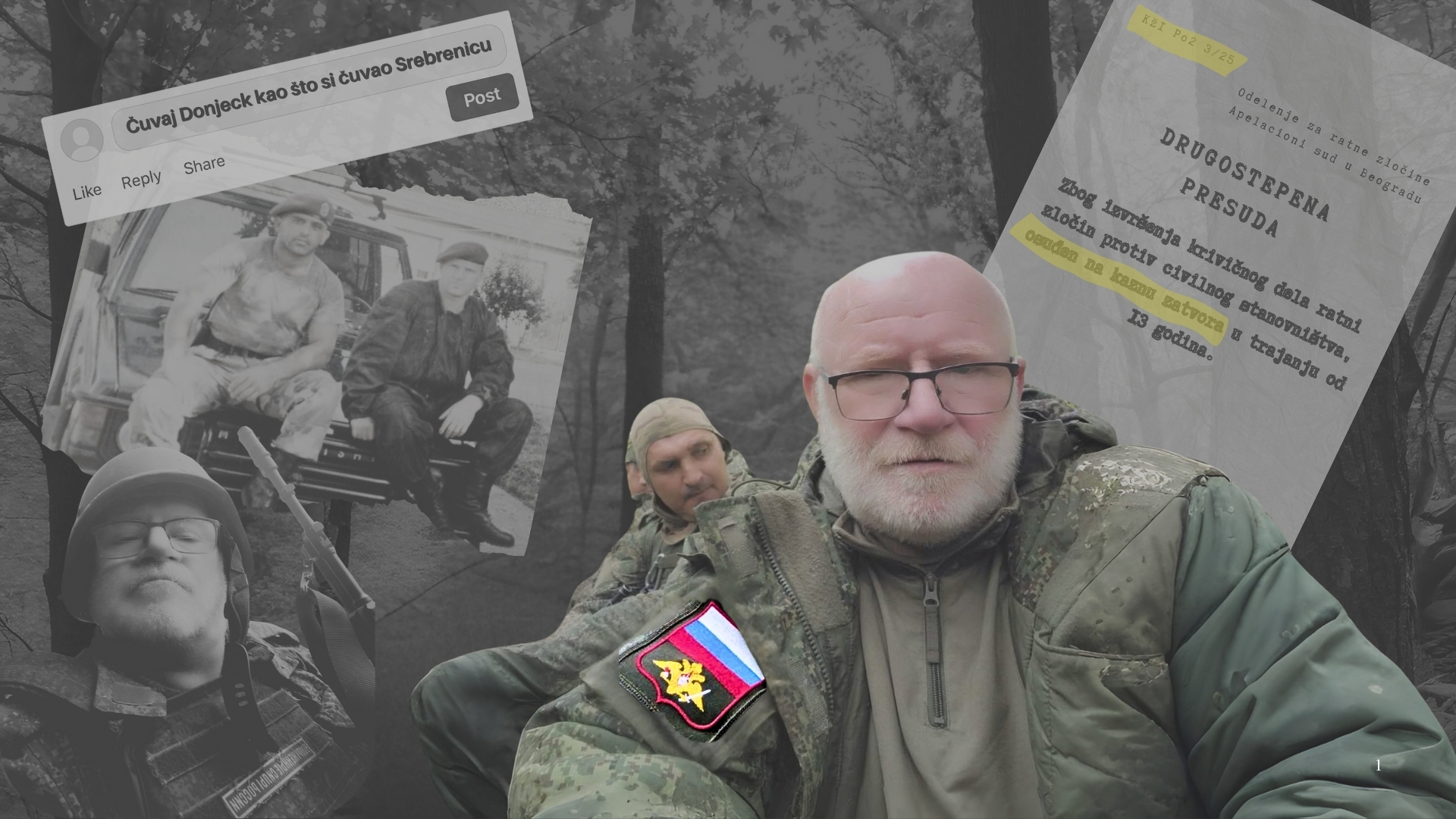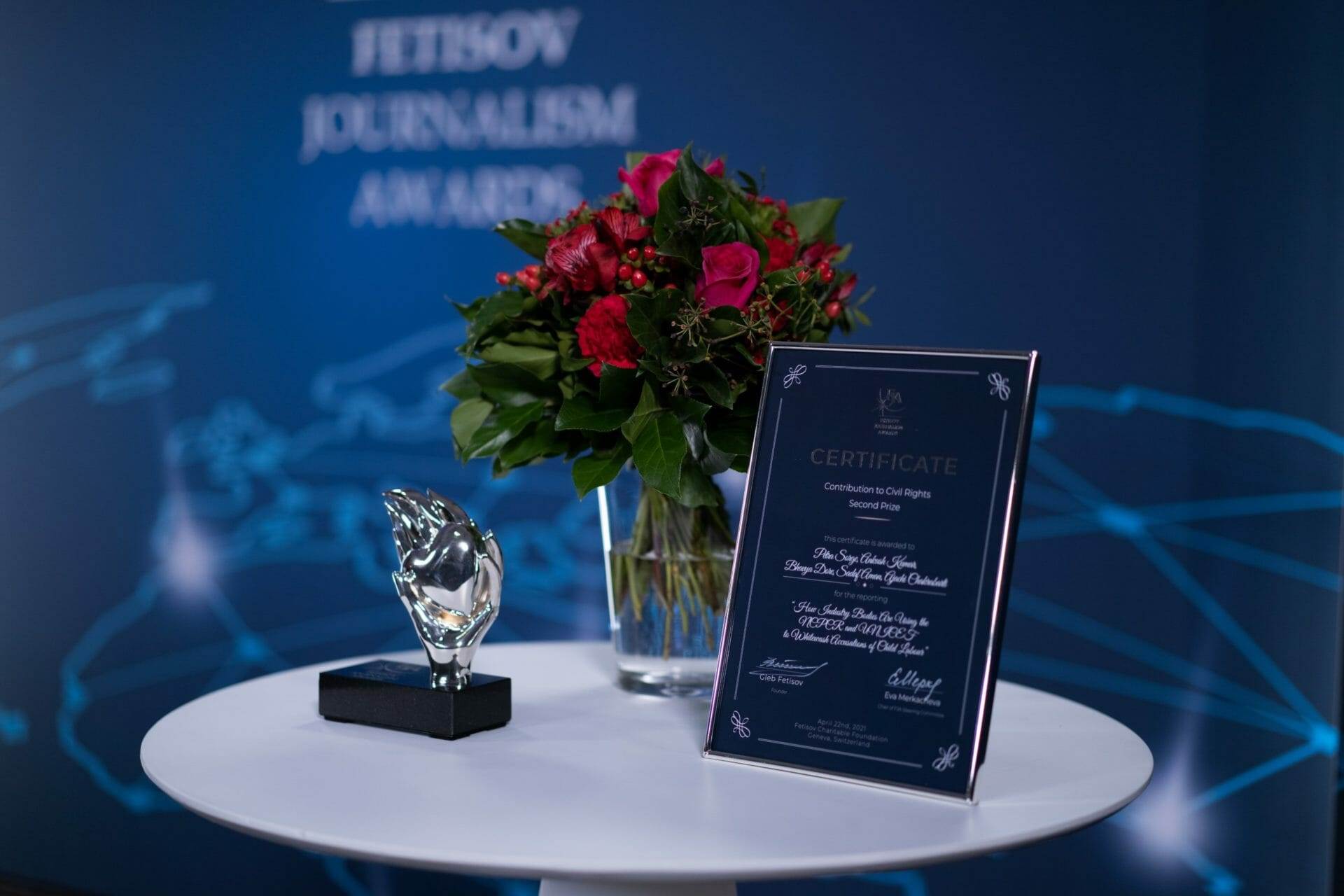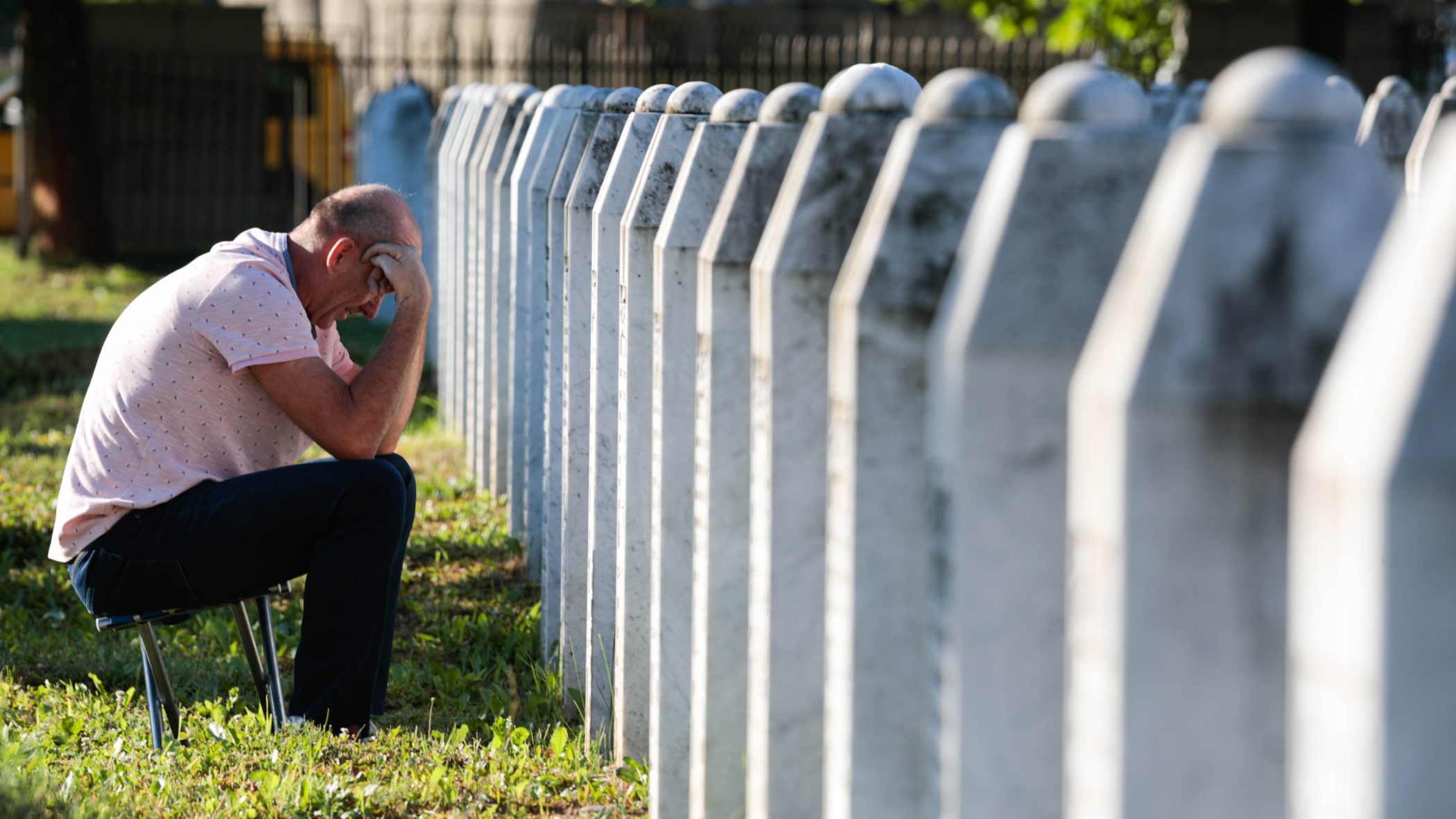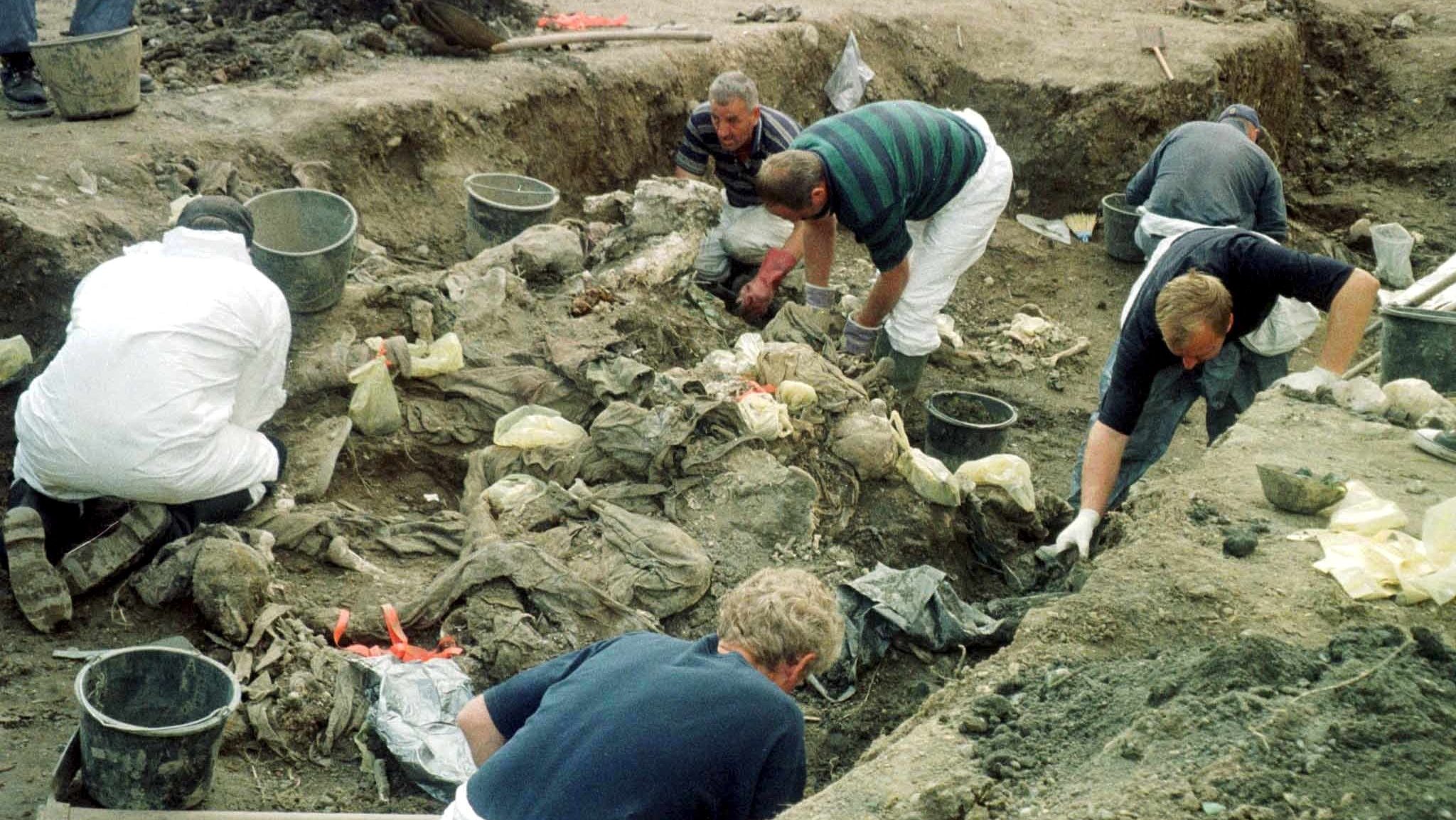This post is also available in: Bosnian
Ranko Kuljanin and his cousin Mile greet Detektor’s journalists in the summer garden of a cafe in Višegrad in September 2024. The garden offers a view of the Mehmed-paša Sokolović Bridge, connecting the two banks of the Drina River.
“And what is it that you want from me, what are you expecting?” Ranko asks.
It’s hard to say whether his words signify that he doesn’t trust journalists, or whether he’s losing hope after more than three decades of searching for his brother, who disappeared in 1992.
Over the phone, he seemed interested in the idea of Detektor’s journalists creating a database of children missing in the war in order to record stories about them and help the ongoing search.
But it soon becomes clear that the long years of searching, the disappointments and fading hopes have not affected Ranko’s memories of his brother. He oozes pride as he talks about him.
“Radoslav was tall, had a dark complexion and curly hair. He was 16 and lived in the village of Blace with our parents. I was in Konjic at the time. He was a very good student, he attended a mechanical engineering vocational school. He was an avid student, and helped his parents,” Ranko says.
Radoslav dreamed of graduating from college and becoming a mechanical engineer, he adds. The last he saw his brother was in 1992. Radoslav set off towards Kalinovik with his parents and a group of several others. They were captured at Bjelimići and taken to Glavatičevo, Ranko learned.
“Men and women were separated from each other in the hamlet of Račica and he’s been unaccounted for since then. The women were taken to Konjic. Two elderly people were found in the village of Blace, where they were killed and buried, and we haven’t been able to find these three young men – Radoslav and Slobodan Kuljanin and Vaso Golubović – anywhere,” says Ranko. He believes that Radoslav was set on fire by members of the Army of Bosnia and Herzegovina during their attack on the village of Blace in May of 1992.
Ibro Macić was sentenced to ten years in prison by the Court of Bosnia and Herzegovina for his participation in the killing of four elderly women in the village of Blace, while Osman Brkan was acquitted. No one has yet been held accountable for the killing of other villagers, including 16-year-old Radoslav.
“I would be the happiest man in the world if I could find his bones. I am not looking for the culprit, I am not interested in culprits, I only care about the bones. I call on all those with information about the location of the remains to let us know somehow, anyhow, anonymously,” Ranko appeals, speaking through tears.
Ranko’s appeal is just one of dozens that Detektor has recorded or plans to record for the database of children who went missing in the war in Bosnia and Herzegovina, with the hope that it can help parents and family members find the remains of their loved ones, or complete their entire remains so that they can be buried with dignity. Years after the war in Bosnia and Herzegovina, almost 400 people who disappeared as children are still missing.
Since 1992, Šerif Kasumović has been searching for his six-year-old daughter Šejla and one-year-old son Almin, who disappeared with his wife Đulsa.
“My Šejla had black hair. She would always greet me on my way back from work, to untie my shoelaces, take my tracksuit and put it on the hanger, even though she couldn’t reach it. She loved playing with Almin, who had blond, curly hair. We didn’t cut his hair when he was one year old,” recalls Šerif as he shows their photos.
The family lived in Bijelo Polje near Mostar. One evening, they spotted armed men with their faces masked in the backyard, standing around the fire, and Đulsa decided to go with their children to Zijemlje, up from Mostar.
“All the Muslims fled the neighbourhood. Đulsa said she was going to Zijemlje, from where she planned to move to Kljuna, to her mother’s. But she didn’t manage to, so she stayed in Zijemlje at her father’s,” says Šerif.
He last saw his wife and children on July 15, 1992 in Zijemlje. He later learned that they had been expelled to Nevesinje, an area controlled by the Bosnian Serb Army, and have been unaccounted for ever since.
“Whenever I meet people, I ask everyone: ‘If you have any information, help me, I’ll never reveal that it was you who told me. I’m not asking who did it, just tell me where the bones are.’ It would mean something to me to go to that grave, that hurts me the most. Because when I am gone, it’s all gone,” says Šerif.
He remarried after the war and had a daughter. He had no doubt about what to name her.
“I told my wife – if it’s a boy, you name him. If it’s a girl, it’s going to be Šejla. She takes after me, just like the other Šejla,” Šerif recalls through his tears.
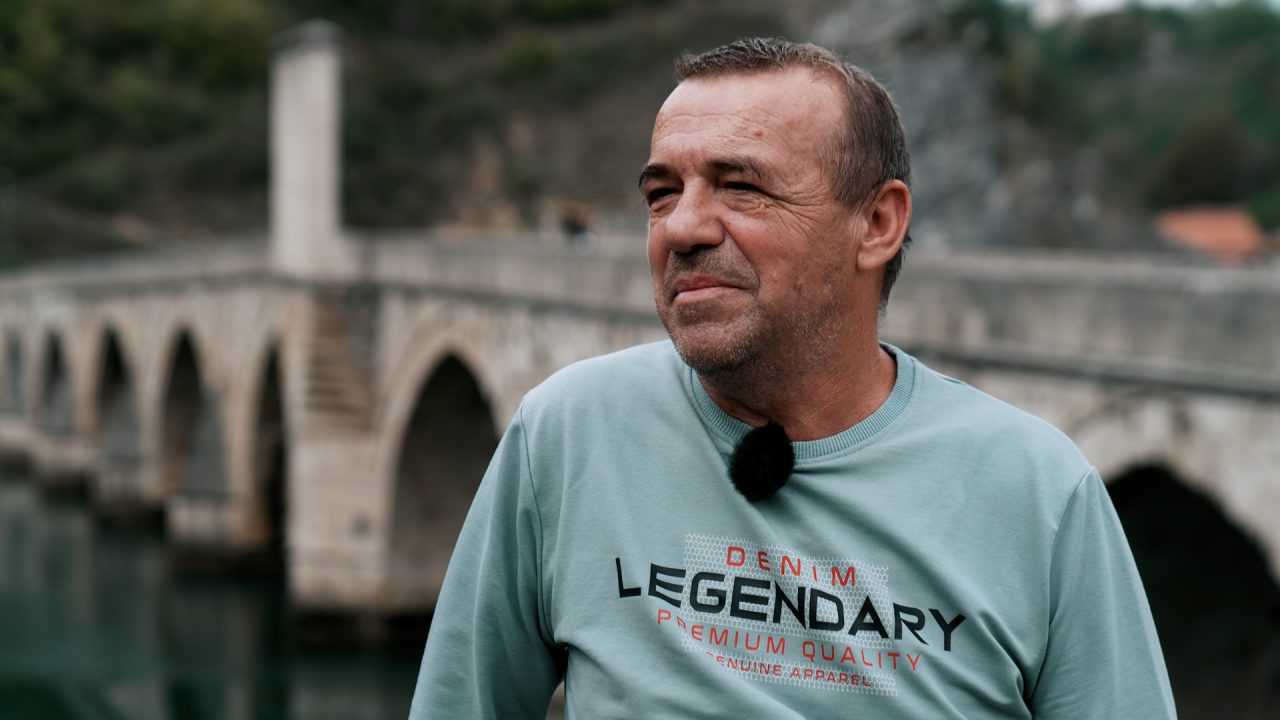
Ranko Kuljanin searches for the remains of his brother Radoslav. Photo: Detektor
For psychotherapist Marija Šarić, it is not uncommon for parents to think little about punishing the perpetrators so many years since the war.
“Parents have but one wish, and that is to find their missing children. Because this story belongs to them, this trauma belongs to them. But what also belongs to them are their children’s remains. And it doesn’t matter anymore who is to blame,” she explains.
Parents who are still searching for their children remain in a vicious circle they cannot escape, Šarić says.
“We lose hope, we remain in agony, we remain in the dark, it’s a pain that simply does not go away. Some never get out of it and keep spinning around in constant agony because there is no closure for them,” she explains.
For more than 25 years, Ismet Musić has been helping families find relatives who went missing in the war. An investigator with the Missing Persons Institute of Bosnia and Herzegovina in the organisation’s Tuzla Regional Office, Musić himself is also still searching for missing family members. The hardest thing for him is when he finds the remains of children in a mass grave.
“Then you encounter even a greater pain – after the remains are identified, when you have to tell that mother that we found the remains of her child. Then you tell the mother that the remains were found, and then you have to let her mourn, and then you cause her even greater pain when you tell her: ‘Unfortunately, sometimes it’s only a few, two or three bones, the rest of the body has not been found,’” explains Musić.
So far, the Tuzla Regional Office has identified 589 minors whose remains have been handed over to their families.
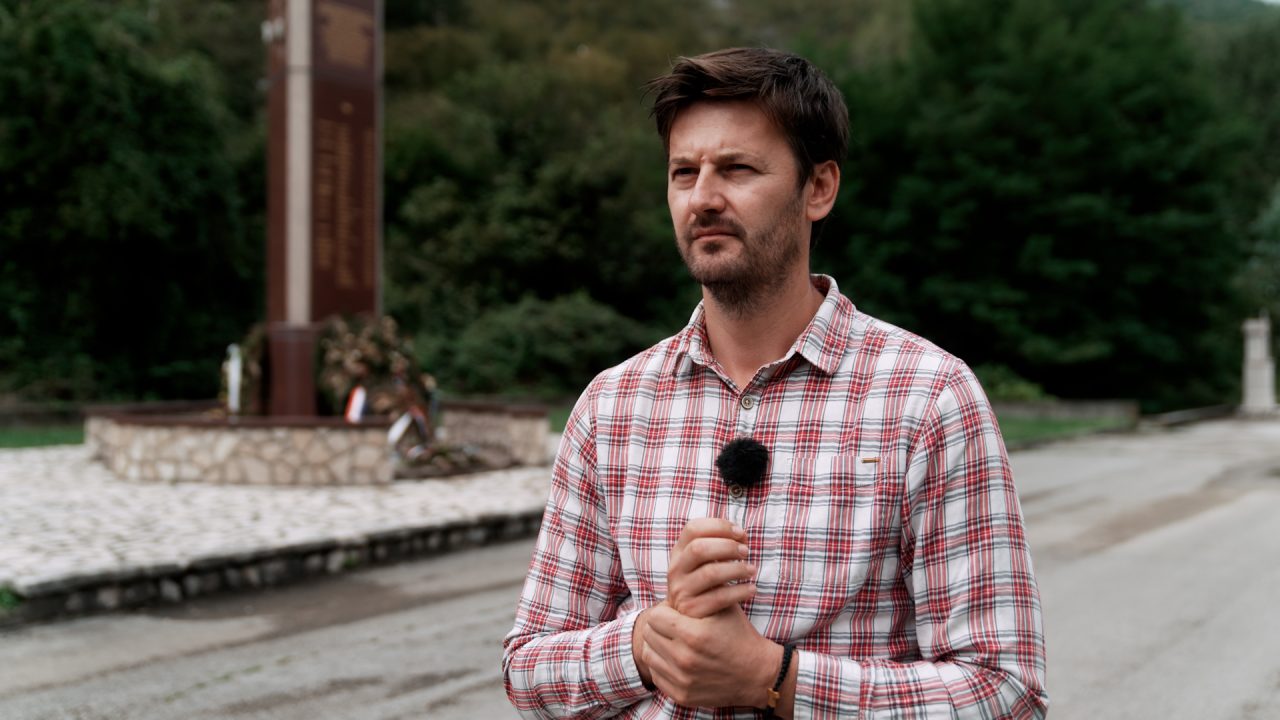
Goran Zadro is looking for the remains of his sister and mother. Photo: Detektor
Between Jablanica and Mostar, on the right bank of the Neretva River in Grabovica, next to a monument, Detektor’s journalists are greeted by Goran Zadro. The monument bears the inscription of names of 33 civilians killed by members of the Army of Bosnia and Herzegovina on September 9, 1993. On that day, Goran’s grandparents, mother and father and four-year-old sister Mladenka were killed.
“I remember she was blonde, blue-eyed. Playful, cheerful and a good kid,” Goran recalls of his sister, whose remains he is still hoping to find.
He never found the remains of his mother Ljubica either. When the soldiers came to the house, he and his brother Zoran hid in the forest overlooking the house.
“First they took my grandparents to show them the stable where the cattle was. They followed them, and then my father followed them. It was about 30 metres from the house. Then shots were heard. Then we saw my mother and sister walking towards the stable and then more shots were heard. That was the last day I saw them alive,” he recalls.
Goran’s only wish is to find the remains of his mother and sister, and to bury them properly in their rightful place.
“When I go there, I take a candle to the grave – to my father, grandmother and grandfather. But what happened to them, where were they left? It’s as if they don’t have a place, and they truly don’t,” Goran says.
“One day I will die and feel sorry that there was no closure as there should have been, out of respect for the victims. And ultimately, for the sake of truth itself, for the generations to come after us – what kind of example are we setting for them if everything stays as it is?” he asks.
His search for the remains of his loved ones continues.
*This analysis was produced with the assistance of the EU Support to Confidence Building in the Western Balkans project, funded by the European Union and implemented by the United Nations Development Programme (UNDP). The content of this article is the sole responsibility of BIRN and does not necessarily reflect the views of the European Union or UNDP.
